

How To Choose a Binocular
Quality telescopes and binoculars are invaluable tools for observing objects from a distance. They can be used on trips, in nature, watching sports, in hunting and also by the military and the navy. How to choose binoculars or a telescope with the parameters that will best suit your needs and what to watch out for?

Answer these questions before choosing
What exactly will you observe and how often?
Where will you use them?
How much are you willing to invest?
Important parameters for telescope/binocular selection
The power of the telescope/binoculars
The power of the telescope/binoculars is characterized by a number indicating the magnification of the binoculars (or zoom) and the diameter of the lens, for example 8 × 30.
Here, the number 8 represents the magnification of the telescope/ binoculars. So if you are observing an object from a distance of 80 m, it will appear to you as if you were observing it from a distance of 10 m (80/8 = 10) without the telescope/ binoculars. The number 30 here means the diameter of the telescopic lens in millimeters. The larger the value, the larger and heavier the telescope, but the clearer and brighter he observed object will appear. Higher luminosity will be useful in reduced light conditions, such as night, dusk, in the forest, in fog, etc.
Telescopes/binoculars without focusing
Telescopes/binoculars without a focusing function are also available, i.e telescopes/ binoculars that have a fixed focus. It is usually from 20 m to infinity. This type of telescope/ binoculars do not have a focusing wheel or dioptric correction, so they are not suitable for people with glasses. They are used to track fast-moving objects when you could miss important moments while focusing, such as stadium athletes, wildlife and birds.
Lens
The lens is the first optical system to create an image of the observed object. It is desirable to have the highest possible image quality and the ability to transmit as much light as possible from the observed objects. This is mainly affected by the diameter of the lens, which then has a direct effect on the size of the telescope/ binoculars itself. The larger the lens, the greater the luminosity. Higher quality binoculars with greater luminosity have a diameter of 40-56 mm, pocket binoculars about 20-35 mm.
Eyepiece
The eyepiece is the last optical component of the telescope/ binoculars. It consists of one or more lenses and projects an image created by a lens into our eye. Like the lens, it has a major impact on the quality of the resulting telescopic image. The eyepiece has an eyecup that fits around the socket of the eye and determines the distance between the last optical part of the eyepiece and the place where the image is formed. It compensates for eye defects.
Prisms
Between the lens and the eyepiece there is a prism, which can be of the Prism, Porro or Roof variety. In all cases, the prisms invert the image so that it is correctly oriented laterally and vertically.
Prism (traditional type) – a classic and inexpensive construction used by most of today's telescopes/ binoculars. It uses a convex lens for the eyepiece, but also for the lens itself - the optical prism (prism) then rotates the inverted image. Typically, a prismatic design is relatively robust and heavy.
Roof structure – more complicated to manufacture, higher quality and more expensive materials are required, therefore telescopes/ binoculars of this type are more expensive. The lens and eyepiece are in line, which leads to more compact shapes than we see with Porro telescopes/ binoculars.
Porro structure – simpler to manufacture, these prisms are positioned so that the light coming into your eyes follows a Z-shaped path. Telescopes/ binoculars of this type do not have as compact shapes as the Roof type, but they are cheaper.
Field of vision
The field of vision is a cone-shaped space that we see from telescopes/ binoculars. It is given in meters at a distance of 1000 m (eg 150 m per 1000 m), or in feet per 1000 yards (eg 400` per 1000 yards). Occasionally it is given in degrees.
Luminosity
The luminosity of the lens expresses the amount of light passing through the optics. The higher the value, the brighter the image. It is calculated the same for all telescopes/ binoculars - as the square of the ratio of the lens diameter in mm and the magnification. For example, an 8 × 30 telescope will have a relative luminosity of 14.
Types of glasses
BK-7 (borosilicate glass) – used for cheaper telescopes/ binoculars because it has poorer light transmission. It’s sufficient for recreational observation.
BaK-4 (barium crown glass with minimal variance) is inserted into more expensive telescopes/ binoculars and comes in handy especially when observing in poor lighting conditions. It has a higher light transmission than BK-7.
Telescope/ binoculars’ body material
Steel, aluminum alloys or plastics with additional mixtures of graphite or ceramics are most often used to manufacture the body of telescopes/ binoculars. The disadvantage of steel telescopes/ binoculars is that they are heavier, while aluminum ones have problems with thermal expansion. Plastic telescopes/ binoculars with graphite or ceramic additives are better suited for outdoor use.
Basic types of telescopes/ binoculars

Binoculars
For observation with both eyes
Binoculars are designed for observation with both eyes. Both sides of the brain are involved in the process of vision, thanks to which we are able to perceive the depth of the image better and more naturally and estimate the distance. Lower zoom levels are compensated for by removing image shakes and larger viewing angles.
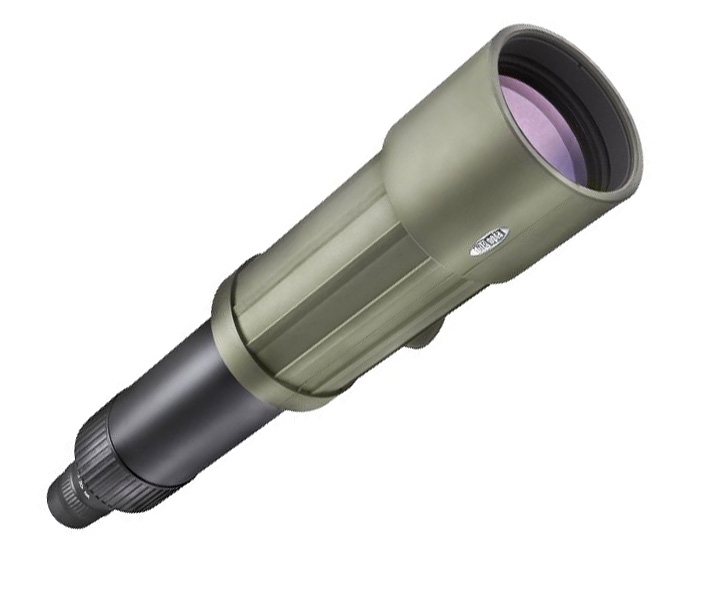
Monocular (spectra)
For observation with one eye
Monoculars, unlike binoculars, are designed for observation with only one eye. The main advantages associated with this are greater possibilities of zooming in and observing, identifying or photographing targets over long distances. At the same time, however, the angle of view, the luminosity of most monoculars and the shaking of the image increases significantly when zooming.
Choose binoculars according to use
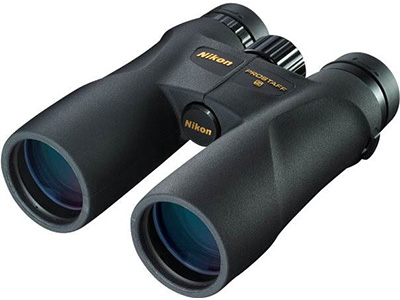
Tourist and sports binoculars
Sports or tourist binoculars should above all be light, flexible, durable and, ideally, also wide-angle. That is why we most often choose binocular models with a rubberized surface, which are easy to handle and are very quick to use (often it is enough to hang it on the neck and set off). We must always keep in mind that a smaller telescope size also means a smaller zoom range and lens diameter. We recommend variants of 7 × 35, 7 × 50, 10 × 50 binoculars.
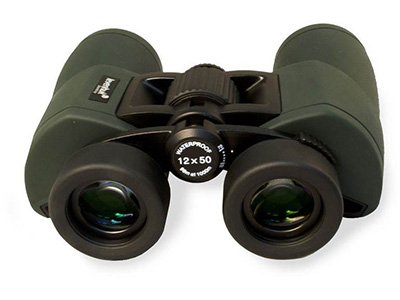
Binoculars for observing wildlife
Nowadays binoculars are most popular for this - in general, wildlife can be well observed with high-quality tourist binoculars. However, the parameters that play an important role here are the luminosity and the maximum range of vision. Therefore, if you are going to observe bird nests at great distances and in poor lighting conditions, do not hesitate and choose a monocular telescope with a larger zoom and a tripod with a clear image. We recommend variants of binoculars 7 × 42, 8 × 42, 7 × 50, 8 × 56, 9 × 63 or 10 × 50, ideally in green or other inconspicuous colours.
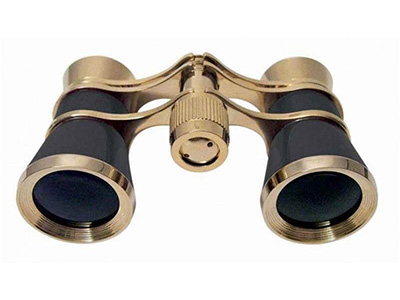
Theater binoculars
In theaters, we most often encounter small binoculars, which typically have 3x to 8x zoom and a smaller lens diameter - it is usually not needed due to smaller distances in the theater. Emphasis can also be placed on an elegant appearance. We recommend variants of 4 × 21, 4 × 30, 6 × 15, 8 × 21 or 8 × 25 binoculars.
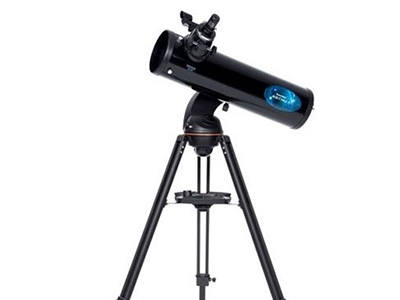
Astronomical telescopes
Although there are binocular variants in this category as well, we often come across large and heavy monoculars with a tripod. The zoom range of astronomical telescopes goes from 30x to 225x or more, while the diameter of the front lens is about 70mm. So a tripod is an absolute necessity, we would often not be able to hold such a telescope without it.
Telescopes and binoculars by price
Categories up to 5,000 CZK
In this category you will find telescopes and binoculars for undemanding users. These are most often classic tourist or pocket binoculars with a lower zoom. You will also come across observation binoculars or telescopes for complete beginners.
From 5,000 CZK to 15,000 CZK
The price range from 5,000 CZK to 15,000 CZK will offer the best tourist binoculars, hunting binoculars and telescopes and also more advanced astronomical telescopes.
From 15,000 to 30,000 CZK
Even more demanding users can choose from here - specialized observation binoculars, digital telescopes and binoculars or high-quality astronomical telescopes with high luminosity and massive zoom are quite common. You will also find more professional functions, such as water resistance, nitrogen filling, night vision, etc. The quality of the optics of these devices is top notch.
Categories from 30,000 CZK upwards
This category is reserved for the best specialized devices with a large number of professional functions, which are aimed primarily at advanced users. The vast majority of Telescopes and binoculars in this category can be used only in combination with a tripod due to the dimensions of the lenses and the large zoom.
Special features of binoculars/ telescopes
Zoom
The zoom in binoculars allows you to select a magnification in a certain, fixed range (eg 10 × to 15 ×). Variable magnification is more typical of monoculars. Zoom can often work as a mere advertising ploy - a larger number of optical parts in a telescope significantly reduces the brightness, angle of view, but also the image quality. Therefore, zoom is really desirable, especially with astronomical telescopes and telescopes with a tripod.
Night vision
The night vision function is especially useful for hunting or to protect objects. Telescopes/ binoculars with this function use either residual light from the sun, moon and lamps, or thermal (infrared) radiation, which is emitted by all objects in space, to function properly.
Nitrogen filling
The optics of binoculars and telescopes with this feature are not subject to internal fogging, making it possible to use these devices even in extremely adverse conditions.
Filters
Especially when observing the night sky, it is important to get rid of various side effects, or on the contrary to highlight the desired details of the observed planet, stars, etc. This is possible using special color, solar, polarizing, spectral or photographic filters.
Dioptric correction
If you wear glasses, this feature is absolutely crucial for you. It allows you to sharpen the observed image to the needs of your eyes - we usually sharpen the range of 2 to 5 diopters.
Anti-reflective coating
The luminosity of a particular telescope/ binoculars also depends on the surface of the front lenses. The thin coating on the lens in the form of an anti-reflective layer, which is formed by a metal compound, allows better light penetration into the optics of the telescope/ binoculars. At the same time, the anti-reflective layer protects the lens from scratches and filters out unwanted UV radiation.
Frequently asked questions when choosing a telescope/ binoculars
The better the zoom, the better the telescope/ binoculars?
Greater magnification, or zoom, means that you can observe more distant objects. However, the higher the value, the more the viewing angle decreases, the telescope brightness decreases and the image shakes more. For manual observation, it is therefore recommended to zoom in up to 12 ×. Above this value, it is better to use a tripod.
When observing in poor lighting, i.e in the morning, in the evening, or in bad weather, a 7 × or 8 × zoom is offered. Take, for example, the 8 × 56 telescope - here a smaller magnification in combination with a large diameter lens will ensure perfect optical properties when observing the landscape even in low light conditions.
What diameter of lense do I need for my observation?
Tracking different objects and activities requires different parameters. We take different binoculars to the theater than we’d take into nature or use for bird watching, so it is important to always clarify in advance where you will be using them most.
Examples of use:
Nature - 7 × 35, 7 × 50, 10 × 50 - wide-angles are suitable
Observing animals in nature - 7 × 35, 7 × 42, 8 × 42, 7 × 50, 8 × 56 - very good brightness
Roads, sports - 7 × 35 - acceptable size and weight
Sunsets, night, cloudy sky - 7 × 50
Clear and sharp observation at a great distance - 10 × 50
Open-air concerts - 7 × 35, 7 × 50, 10 × 50, 12 × 50, 16 × 50
Theater, indoor sports - 4 × 21, 4 × 30, 6 × 15, 8 × 21, 8 × 25 - small zoom for short distances, pocket size
Fixed or variable zoom?
Binoculars/ telescopes with variable zoom are usually 10–30 × 50, where 10–30 is the zoom range. It allows you to observe in the distance and at close range, but with poorer optical quality, light transmission and up to 30% smaller viewing angle than with a fixed zoom.
The heavier the binoculars/ telescopes, the better the quality?
It used to be that way, but now this may not be true due to the advent of new technologies. It is better to follow the weight of the telescope in terms of the purpose of use. For example, if you walk often, you will be happy for every kilogram you save.
Glossary - binoculars/ telescopes
Anti-reflective treatment
The anti-reflective layer is a thin layer applied to the lens that prevents the reflection of light rays from the lens glass. Like the diameter of the lens, it therefore affects the amount of light that penetrates the telescope's (or binoculars’) optics.
We divide anti-reflective treatment as follows:
FC (FullyCoated) - simple anti-reflection coating
MC (Multi Coated) - multiple layers (up to 7)
FMC or Super (Fully) MultiCoated - multiple layers (over 7)
Lens
The lens is the first optical system to create an image of the observed object. It is desirable to have the highest possible image quality and the ability to transmit as much light as possible from the observed objects. This mainly affects the diameter of the lens, which then has a direct effect on the size of the telescope itself. The larger the lens, the greater the luminosity. Higher quality telescopes/ binoculars with a large aperture have a diameter of 40-56 mm, pocket binoculars about 20-35 mm.
Eyepiece
The eyepiece consists of one or more lenses and is the last optical part of the telescope. It projects the image into our eye and, like the lens, directly affects the quality of the resulting image. Eyepieces have a fixed or variable zoom.
